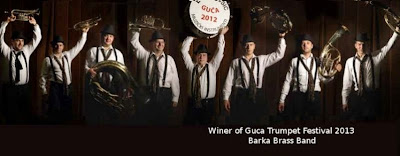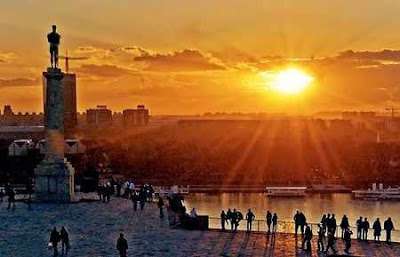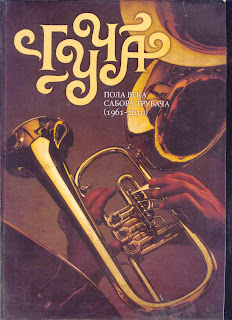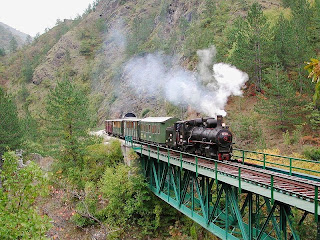55th GUCA BRASS BANDS FESTIVAL
Kneza Milosa bb
32230 Guca
+381-64-555-8581;
guca@booking-hotels.biz
https://www.facebook.com/guca.festival
GUCA FESTIVAL PROGRAM
(03 - 09 August 2015)
12:00 - Press Conference at Center for Culture
- brass band of Goran Rankovic, Guca
17:00 - Opening of the art exhibition and exibition „With distaff through time”
- Museum of Trumpet
- brass band of Goran Rankovic, Guca
20:00 - Cultural and artistic program of the pre-competition center Boljevac
at stage of the Center for Culture
21:00 - Cultural and artistic program of the pre-competition center Zlatibor
at stage of the Center for Culture
- brass band of Goran Rankovic, Guca
- brass band of Bozidar Lukovic, Kotraza
- singing group “Bukovica Brojanica”, Bukovica
- singing group “Dragacevski biseri”, Guca
- singing group “Lejkasi”, Jelasnica
- singing group “Srpska sajkaca”, Puhovo
- Cultural and Artistic Association “Tanasko Rajic”, Ljubic
14:00 - Cultural and artistic program “Houseleek” - stage of the Center for Culture
- brass band of Goran Rankovic, Guca
- brass band of Bozidar Lukovic, Kotraza
- singing group “Bukovica Brojanica”, Bukovica
- singing group “Dragacevski biseri”, Guca
- singing group “Lejkasi”, Jelasnica
- singing group “Srpska sajkaca”, Puhovo
- Cultural and Artistic Association “Tanasko Rajic”, Ljubic
16:00 - Opening of the exhibition of economy at sports center
- brass band of Bozidar Lukovic, Kotraza
17:00 - Journalists’ day and program of editorial staff of weekly newspaper “Čačanski glas”
- brass band of Bozidar Lukovic, Kotraza
20:00 - Cultural and artistic program of the pre-competition center Surdulica
at stage of the Center for Culture
21:00 - Cultural and artistic program of the pre-competition center Kovačica
at stage of the Center for Culture
- singing group “Srpski jelek”, Cacak
- singing group “Studenac”, Kotraza
- singing group “Momcilo Tesic”, Pozega
- singing group “Dragacevo Kombinat”, Guca
- Cultural and Artistic Association “Milisav Petrovic”, Parmenac
11:00 - Tourist postcard “Greetings from Dragacevo” – excursion for Festival visitors
12:00 - Press Conference – Center for Culture
- brass band of Veljko Ostojic , Zlakusa
14:00 - Day of Italian technology in food industry (potato industry)
- Municipal building
14:00 - Cultural and artistic program “Houseleek” - stage of the Center for Culture
- brass band Zao Taro Light of Milojko Djuric and Ljubivoje Dikovic, Kalenici
- brass band of Veljko Ostojic, Zlakusa
- singing group “Srpski jelek”, Cacak
- singing group “Studenac”, Kotraza
- singing group “Momcilo Tesic”, Pozega
- singing group “Dragacevo Kombinat”, Guca
- Cultural and Artistic Association “Milisav Petrovic”, Parmenac
- Cultural and Artistic Association “Paja Zaric”, Novi Karlovci
18:00 - Presentation of books and publications – Museum of Trumpet
- brass band of Zao Taro Light of Milojko Djuric and Ljubivoje Dikovic, Kalenici
20:00 - Performance “They won- they deserved it” – stage of the Center for Culture
- brass band of Dejan Lazarevic, Pozega
- brass band of Elvis Ajdinovic, Surdulica
- brass band of Dejan Jevđic, Pozega
- brass band “Barka”, Knjazevac
- singing group “Zora”, Kragujevac
- singing group “Zlatne ruke” and “Raspevani Palilulci” with pipers, Cacak
- Cultural and Artistic Association “Paja Zaric”, Novi Karlovci
- singing groups “Ljubicanke” Ljubic and “Gorski car” Jarmenovci
- singing group “Raspevani Zlatibor” Rozanstvo
- singing group “Mile Dragovic” Dragacica
- Cultural and Artistic Association “Bambi”, Cacak
11:00 - Tourist postcard “Greetings from Dragacevo” – excursion for guests
12:00 - Press Conference - Center for Culture
- brass band of Elvis Ajdinovic, Surdulica
14:00 - Cultural and artistic program “Houseleek” - stage of the Center for Culture
- brass band “Barka” Knjazevac
- brass band of Elvis Ajdinovic, Surdulica
- singing groups “Ljubicanke” Ljubic and “Gorski car” Jarmenovci
- singing group “Raspevani Zlatibor” Rozanstvo
- singing group “Mile Dragovic” Dragacica
- Cultural and Artistic Association “Bambi” Cacak
17:00 - “Children’s day” at stage of the Center for Culture
- Brass band “Danijela” Arilje
- Cultural and Artistic Association “Bambi” Cacak
- Cultural and Artistic Association “Abrasevic” Guca
- young pipers
- singing group “Dragacevski biseri” Guca
19:00 - Program “We are for piece” organized under the auspice of Embassy of Russian Federation in Belgrade at stage of the Center for Culture
21:00 - International competition of brass bands at the stadium
22:00 - Concert Dejan Petrovic Big band - at the stadium
23:00 - Concert DJ Shantel & Bucovina Club Orkestar at the stadium
THURSDAY, 06/08/2015
- brass band of Miroljub Miro Kremic, Gostinica
- brass band Zao Taro Light of Milojko Djuric and Ljubivoje Dikovic, Kalenici
10:00 - Cultural and artistic program “Houseleek” - stage of the Center for Culture
- singing group “Sarski izvori” Strpce
- singing group “Bozidar Micic” Velika Hoca
- singing group “Petrova Gora – Kordun” Belgrade
- brass band Zao Taro Light of Milojko Djuric and Ljubivoje Dikovic, Kalenici
- brass band of Dejan Jevđic, Pozega
- brass band of Miroljub Miro Kremic, Gostinica
- Cultural and Artistic Association “Soko” Visegrad (Republika Srpska)
12:00 - Press conference - Culture Hall
- brass band of Dejan Jevdjic, Pozega
13:00 - The competition of Zdravicari (those who propose toasts), the national costumes
contest – stage of the Center for Culture
- brass band of Ivan Jovanovic, Uzice
14:00 - The all-around people’s tournament in traditional sport disciplines – stadium
- brass band of Sinisa Stankovic, Zaguzanje
14:00 - Cultural and artistic program “Houseleek” - stage of the Center for Culture
- singing group “Sarski izvori” Strpce
- singing group “Bozidar Micic” Velika Hoca
- singing group “Petrova Gora – Kordun” Belgrade
- brass band of Bozidar Nikolic Donja, Grdelica
- brass band of Ekrem Mamutovic, Vranje
- brass band of Sasa Krstic, Zaguzanje
- Cultural and Artistic Association “Soko” Visegrad
- Cultural and Artistic Association “Hercegovina” Petrovo Polje
17:00 - Festival parade – streets of Guca
- brass band of Elvis Ajdinovic from Surdulica
- brass band of Veljko Ostojic from Zlakusa
- brass band „Zlatne trube“ from Knjazevac
- brass band of Marjan Krstic from Zaguzanje
- brass band of Miroljub Miro Kremic from Gostinica
- brass band of Danijel Jokanovic from Sid
- brass band of Bojan Krstic from Vladicin Han
- brass band Zao Taro Light of Milojko Djuric and Ljubivoje Dikovic from Kalenici
- brass band „Timocani“ from Knjazevac
- brass band of Sasa Krstic from Zaguzanje
- brass band of Ivan Jovanovic from Uzice
- brass band of Bozidar Nikolic Donja from Grdelica
- brass band „Barka“ from Knjazevac
- brass band of Goran Rankovic from Guca
- brass band of Ekrem Mamutovic from Vranje
- brass band of Dejan Jevdjic from Pozega
- brass band of Bojan Ristic from Vladicin Han
- brass band of Bozidar Lukovic from Kotraza
- brass band of Sinisa Stankovic from Zaguzanje
- Cultural and Artistic Association “Srbi i prijatelji” from Tetovo (Macedonia)
- Cultural and Artistic Association “Dravca” from Dravograd (Slovenia)
- Cultural and Artistic Association “Hercegovina” from Petrovo Polje (Republika Srpska)
- Cultural and Artistic Association “Soko” Visegrad
- Cultural and Artistic Association “Bambi” Cacak
- Cultural and Artistic Association “Prosveta” from Rijeka (Croatia)
- Brass band Les 38 tonnes from France
- Go East Orkestar from Brasil
- brass band “Danijela” from Arilje
- brass band of Vladimir Ivanovic from Zaguzanje
- brass band “Timocki veseljaci” from Knjazevac
- brass band of Petar Milicevic from Kostojevici
- brass band of Dragoslav Dimitrijevic from Surdulica
- brass band of Aleksandar Grujicic from Draglica
- brass band of Isidor Zecirovic from Bojnik
- brass band of Stefan Markovic from Bajina Basta
- brass band of Kristijan Trajkovic from Zaguzanje
- brass band “Caribrod” from Dimitrovgrad
- brass band of Marko Gligorijevic from Dub
- brass band of Kristijan Azirovic from Bojnik
- brass band of Nikola Papic from Priboj
- brass band of Emir Salkovic from Bojnik
- brass band of Darko Stankovic from Zaguzanje
- brass band of Mihailo Stojkanovic from Priboj
- brass band of Stefan Ristic from Vladicin Han
- brass band of Music center Pancevo from Pancevo
19:00 - General rehearsal of the final competition – at the stadium
19:00 - Competition of young brass bands- stage of the Center for Culture
- brass band “Danijela” from Arilje
- brass band of Vladimir Ivanovic from Zaguzanje
- brass band “Timocki veseljaci” from Knjazevac
- brass band of Petar Milicevic from Kostojevici
- brass band of Dragoslav Dimitrijevic from Surdulica
- brass band of Aleksandar Grujicic from Draglica
- brass band of Isidor Zecirovic from Bojnik
- brass band of Stefan Markovic from Bajina Basta
- brass band of Kristijan Trajkovic from Zaguzanje
- brass band “Caribrod” from Dimitrovgrad
- brass band of Marko Gligorijevic from Dub
- brass band of Kristijan Azirovic from Bojnik
- brass band of Nikola Papic from Priboj
- brass band of Emir Salkovic from Bojnik
- Cultural and Artistic Association “Abrasevic” from Guca
- brass band of Mihailo Stojkanovic from Priboj
- brass band of Stefan Ristic from Vladicin Han
- brass band of Music center Pancevo from Pancevo
21:00 - Night of religious music at stage of the Center for Culture
- Concert of Teofilovici Brothers
23:00 - Midnight concert of brass bands at at the stadium
- brass band of Veljko Ostojic from Zlakusa
- brass band of Ekrem Mamutovic from Vranje
- brass band of Elvis Ajdinovic from Surdulica
- brass band of Dejan Jevđic from Pozega
- brass band „Barka“ from Knjazevac
- brass band of Sasa Krstic from Zaguzanje
- brass band of Goran Rankovic from Guca
- brass band „Timocani“ from Knjazevac
- brass band of Marjan Krstic from Zaguzanje
- brass band of Miroljub Miro Kremic from Gostinica
- brass band of Ivan Jovanovic from Uzice
- brass band of Bojan Ristic from Vladicin Han
- brass band of Bozidar Nikolic Donja, Grdelica
- brass band of Sinisa Stankovic, Zaguzanje
- brass band „Zlatne trube“, Knjazevac
- brass band of Danijel Jokanovic, Sid
11:00 - Festival parade at streets of Guca
- brass band of Elvis Ajdinovic from Surdulica
- brass band of Veljko Ostojic from Zlakusa
- brass band „Zlatne trube“ from Knjazevac
- brass band of Marjan Krstic from Zaguzanje
- brass band of Miroljub Miro Kremic from Gostinica
- brass band of Danijel Jokanovic from Sid
- brass band of Bojan Krstic from Vladicin Han
- brass band Zao Taro Light of Milojko Djuric and Ljubivoje Dikovic from Kalenici
- brass band „Timocani“ from Knjazevac
- brass band of Sasa Krstic from Zaguzanje
- brass band of Ivan Jovanovic from Uzice
- brass band of Bozidar Nikolic Donja from Grdelica
- brass band „Barka“ from Knjazevac
- brass band of Goran Rankovic from Guca
- brass band of Ekrem Mamutovic from Vranje
- brass band of Dejan Jevdjic from Pozega
- brass band of Bojan Ristic from Vladicin Han
- brass band of Bozidar Lukovic from Kotraza
- brass band of Sinisa Stankovic from Zaguzanje
- Cultural and Artistic Association “Srbi i prijatelji” from Tetovo (Macedonia)
- Cultural and Artistic Association “Hercegovina” from Petrovo Polje (Republika Srpska)
- Brass band Les 38 tonnes (France)
- Brass band Le Spectre d’Ottocar (France)
- Go East Orkestar ( Brazil)
12:00 - Improvisation of traditional Dragacevo wedding
- stage of the Center for Culture
13:00 - Press Conference - Center for Culture
- brass band of Ekrem Mamutovic, Vranje
14:00 - Cultural and artistic program “Houseleek” at stage of the Center for Culture
- brass band of Elvis Ajdinovic, Surdulica
- brass band of Ekrem Mamutovic, Vranje
- brass band of Sasa Krstic, Zaguzanje
- Cultural and Artistic Association “Svetozar Semic” Jarkovac
- singing group „Snovalica“ Donji Dubac
- singing group „Ducalovci“ Ducalovici
- singing group „Crnucanka“ Gornji Milanovac
17:00 - Cultural and artistic program of the guests from abroad
- stage of the Center for Culture
- brass band of Les 38 tonnes from France
- Brass band Le Spectre d’Ottocar (France)
- Go East Orkestar (Brazil)
- Cultural and Artistic Association “Srbi i prijatelji” (Tetovo, Macedonia)
- Cultural and Artistic Association “Hercegovina” (Petrovo Polje, Republika Srpska)
19:00 - Night of religious music - stage of the Center for Culture
- Church Choir “St. Sava” from Lucani
20:00 - Program of the Cultural and Artistic Association “Frula” Brus
- stage of the Center for Culture
21:00 - Final competition of brass bands (seniors) at the stadium
- brass band of Elvis Ajdinovic from Surdulica
- brass band of Veljko Ostojic from Zlakusa
- brass band „Zlatne trube“ from Knjazevac
- brass band of Marjan Krstic from Zaguzanje
- brass band of Miroljub Miro Kremic from Gostinica
- brass band of Danijel Jokanovic from Sid
- brass band of Bojan Krstic from Vladicin Han
- brass band Zao Taro Light of Milojko Djuric and Ljubivoje Dikovic from Kalenici
- brass band „Timocani“ from Knjazevac
- brass band of Sasa Krstic from Zaguzanje
- brass band of Ivan Jovanovic from Uzice
- brass band of Bozidar Nikolic Donja from Grdelica
- brass band „Barka“ from Knjazevac
- brass band of Goran Rankovic from Guca
- brass band of Ekrem Mamutovic from Vranje
- brass band of Dejan Jevdjic from Pozega
- brass band of Bojan Ristic from Vladicin Han
- brass band of Bozidar Lukovic from Kotraza
- brass band of Sinisa Stankovic from Zaguzanje
- during a break in concert Miroslav Ilic
- singing group “Raspevani Sumadinci” Cacak
- Cultural and Artistic Association “Zavicaj and Banija” Sabac
- Folk dance ensemble of Cultural Center “Veljko Dugosevic” Kucevo
13:00 - Cultural and artistic program “Houseleek” at stage of the Center for Culture
- Winners of the 52nd Dragacevo brass bands festival
- singing group “Biseri Sumadije” Cacak
- singing group “Raspevani Sumadinci” Cacak
- Folk dance ensemble of Cultural Center “Veljko Dugosevic” Kucevo
19:00 - Concert „Dejan & Ceca“ at the stadium
-For all concerts admission is free
11:00 - Tourist postcard “Greetings from Dragacevo”- excursion for journalists
10:00 - Cultural and artistic program “Houseleek” - stage of the Center for Culture
10:00 - Cultural and artistic program “Houseleek” - stage of the Center for Culture
07:00 - Wakening call of the trumpeters at streets of Guca
10:00 - Cultural and artistic program “Houseleek” at stage of the Center for Culture



















